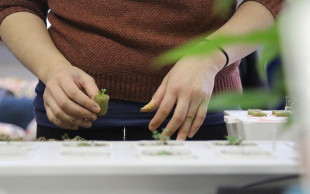With changing social norms and technological advancements, the way people connect and form relationships has changed. In 2024, individuals find themselves exploring new dynamics that were less common in previous decades. Recent patterns in interpersonal connections have been identified through interviews and research, indicating a shift towards more fluid and varied relationship structures. These findings indicate an increased acceptance of non-traditional forms as people navigate their social and romantic lives with greater freedom and personalized understanding.
Traditional Romantic Relationships
Traditional romantic partnerships, often characterized by exclusivity, involve two individuals sharing emotional and often physical bonds. They navigate life's ups and downs together, making plans for the future that include each other. These relationships usually follow a path of dating, engagement, and marriage, but the order isn't set in stone. Each couple decides how they wish to commit to each other, defining their relationship based on mutual respect and love.
Friends with Benefits
A friends-with-benefits arrangement involves two people who engage in intimate acts without the commitment of a traditional relationship. Communication plays a vital role in this type of relationship, as both parties must continually ensure that their friendship and the benefits attached do not lead to unanticipated complications. These relationships often value physical connectivity while maintaining a platonic friendship at their core.
Non-Monogamous Relationships
Non-monogamous relationships break from the notion of exclusivity between two people, allowing partners to explore connections with others. This broad category encompasses several arrangements, from open relationships, where partners can have external sexual encounters, to polyamory, where love is shared among multiple partners. Clear, honest communication and set boundaries ensure the emotional and physical well-being of everyone involved.
Long-Distance Relationships
Long-distance relationships involve partners living apart, sometimes across different cities or even continents. Due to geographical separation, these couples rely heavily on digital communication technologies to maintain their connection. Trust, strong communication skills, and future planning about when to physically reunite are pivotal for the survival of this relationship type.
Asexual Relationships
Asexual relationships focus on emotional intimacy over physical. Individuals who identify as asexual experience little to no sexual attraction to others but may desire romantic relationships. These partnerships are based on a deep emotional connection, shared values, and companionship, offering a fulfilling alternative to traditional romantic relationships.
Non-Traditional Relationships Involving Financial Support
In 2024, an arrangement where one partner provides financial support to the other in return for companionship continues to be recognized. These relationships might include sugar dating, where the dynamics can range widely based on the expectations and agreements of the individuals involved. Here, the emphasis is on a mutually beneficial arrangement that respects the autonomy and needs of both parties. Understanding the various terms and structures within these relationships, such as "what does NSA mean," helps individuals navigate their choices and clarifies the expectations from both sides.
Platonic Life Partners
Platonic life partnerships defy the conventional relationship trajectory by centering on a non-romantic but deeply committed relationship between two individuals. Partners in such arrangements often live together, share financial responsibilities, and plan for the future, all without the elements of physical or romantic intimacy. Their bond is characterized by unwavering support, love, and a shared vision of life, highlighting the myriad ways humans choose to connect and share their lives.
Communal or Group Living
Some individuals opt for communal or group living arrangements, where relationships extend beyond pairs to include multiple individuals sharing domestic spaces and lives. These communities are based on shared values, economic cooperation, and sometimes, collective parenting. Communication, shared responsibility, and negotiated boundaries ensure the health and happiness of all community members.
Solo Polyamory
Solo polyamory describes individuals who engage in loving relationships with multiple partners but choose to remain autonomous. They do not seek a primary partnership, as commonly defined, opting instead for a lack of hierarchy among their relationships. This setup emphasizes independence, with each connection being valued for what it uniquely offers without pressuring any to fit traditional expectations.
Relationship Anarchy
Emerging from the critique of traditional relational paradigms, relationship anarchy dismisses societal norms dictating whom and how one should love. Adherents prioritize autonomy and the freedom to form relationships free from labels and hierarchical structures. Love, respect, and consent are central, allowing fluid, evolving connections that resist categorization.
Conclusion
In conclusion, the world of human connections continues to shift and expand, offering a broad tapestry of relationships in 2024. Individual desires, circumstances, and values drive the formation of varied types of partnerships, each as valid and real as traditional romantic commitments. As societal norms evolve, so too does the understanding and acceptance of the diverse ways individuals seek companionship, intimacy, and love.

















